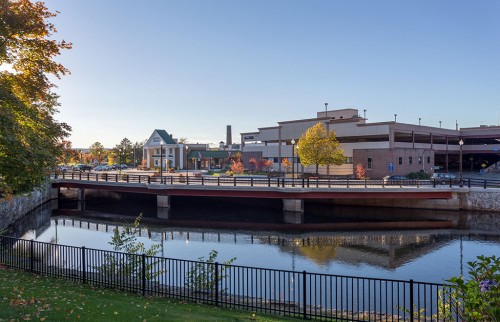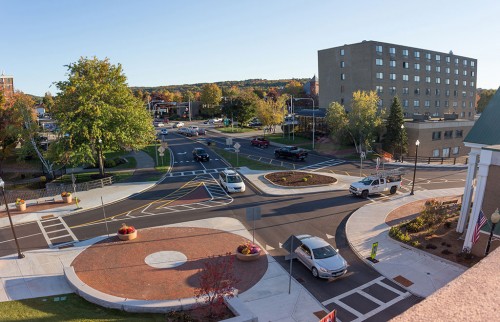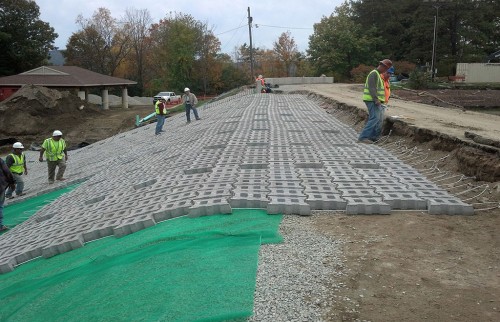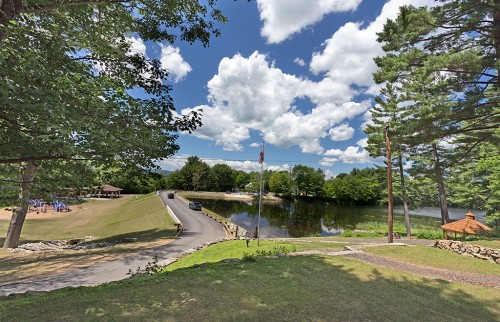


D&K’s Laconia Main Street Bridge Rehabilitation Project was announced as the “Overall Winner” of the 2016 ACEC-NH Engineering Excellence Awards, also recognized as the Category Winner for Structural Systems, signifying the year’s most outstanding engineering achievement. The announcement was made at the EEA Awards luncheon held on Thursday, March 17th in Manchester. D&K also received the Water Resources Category Winner for the Robin Hood Dam Rehabilitation.

Laconia Main Street Bridge
Investigation, evaluation of alternatives, and design for rehabilitation of three independent concrete deck and steel stringer multi-span bridge structures that serve as a crossing of the Winnipesaukee River and support a complex intersection in the center of Laconia. As the predominant access in and out of the downtown area, the heavily traveled bridge is an essential component of the area’s infrastructure with traffic volumes of 10,000 vehicles a day. The design strategy was to merge the three separate bridge structures to function and move as one structure. The project reconfigured the intersection to improve traffic calming and pedestrian amenities. Construction phasing was developed to maintain travel for vehicles and pedestrians at all times.
Robin Hood Dam Rehabilitation
The Robin Hood Dam is a 120-year-old structure that impounds a 6-acre pond within Keene’s Robin Hood Park, a 130-acre woodland and recreational area. The dam did not meet current dam safety standards, and the NHDES Dam Bureau issued a letter of deficiency (LOD) requiring the City make a number of immediate and long-term improvements to the dam. A major issue was inadequate hydraulic capacity. DuBois & King implemented a first-of-its-kind technique (in New Hampshire) of armoring the dam embankment with articulated concrete blocks (ACBs), allowing the strengthened embankment to pass 2 ½ times the 100-year storm event, rather than increasing the height of the dam and redesigning the outlet structure. This approach achieved the hydraulic capacity requirement, reduced construction costs, maintained the current water level, and minimized unwanted changes or modifications to the park.
